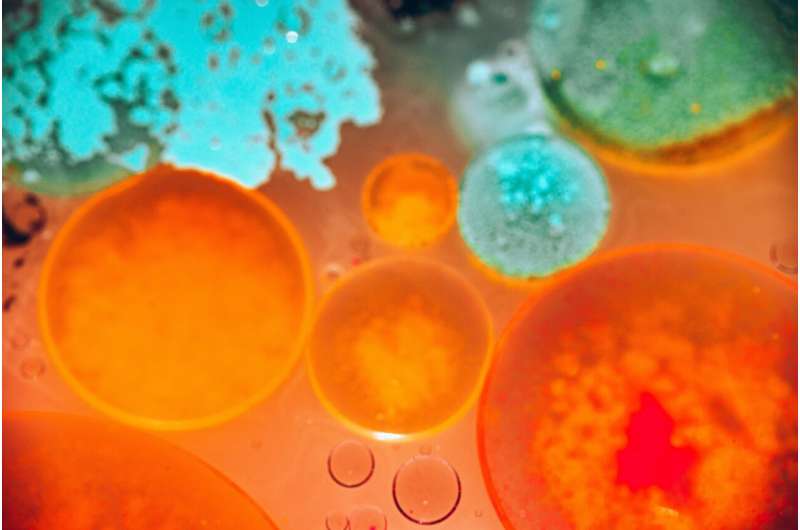This article has been reviewed according to Science X's editorial process and policies. Editors have highlighted the following attributes while ensuring the content's credibility:
fact-checked
trusted source
proofread
New forensic tools aid fight against sexual assault and other crimes

Technological developments in evidence gathering hold out promise of fewer offenses going unpunished.
The global success of television dramas like "CSI: Crime Scene Investigation" has lulled many into thinking that forensic analysis is an all-seeing, speedy science.
The reality is that it's much slower than TV lets on, with more limited scope for success.
Not like TV
TV detectives investigating a rape, for example, are portrayed as finding incriminating DNA evidence easily enough. In the real world, however, the search is often constrained by current forensic methods that can detect only 10% of sperm traces because surfaces absorb evidence and criminals often attempt to wipe it away.
Now two European projects have developed technologies to improve ways of finding the microscopic material needed to ensure a conviction. One—from French biotechnology company AXO Science—is a newly formulated spray for detecting evidence at rape scenes.
"The spray enables investigators to be really specific in identifying sperm stains and it's three times faster than existing methods for collecting samples," said Benjamin Corgier, AXO Science's director of research and development. "There is less doubt about what's being collected, nothing is missed and no time is wasted on analyzing samples that don't yield results."
In Europe, 1 in 10 women over the age of 15 has experienced some form of sexual violence and 1 in 20 women has been raped, according to an EU survey.
AXO Science's forensic crime-scene spray, developed as part of the Themis project, could increase the number of rape convictions. A prototype, called STK Spray, is being put to use across Europe and in North America, South America, Japan and China.
Oldest crime lab
From Lyon, France, home of the world's first police crime laboratory dating to 1910, AXO Science developed the new detection technique for sperm traces after the city's forensics lab asked for help a decade ago.
Using a simple solution that is mixed on location, investigators cover the rape scene with the non-toxic STK Spray. They then check the area with a special ultraviolet light that reveals any semen stains as a blue glow.
The technique identifies 100% of the bodily fluid across most surfaces—floors, walls, door handles, sinks and even grass and leaves—but not textiles. Within minutes, the spray opens the door to DNA identification of the offender.
With forensic experts around the world testing STK Spray, a number of current and cold cases are already heading to court thanks to evidence secured through use of the prototype.
France's National Gendarmerie has confirmed the presence of semen in a 25-year-old case using the technique on evidence that had been stored. In the U.S. state of Nevada, the Reno Police Department recently announced that it had arrested and charged a man with sexual assault dating to 2014 with the help of STK Spray.
Less strain, more proof
In court proceedings, seeing is often believing. That's why the analysis of minute transfers of material invisible to the naked eye is also central to crime-scene investigations.
Tiny fragments of physical evidence such as hair, blood, skin cells and clothing fibers can all link a suspect to a victim and a crime scene. But before that happens, many long hours in the lab can be needed to piece the forensic jigsaw together.
"It's very time consuming and expensive to extract the relevant traces—and for the technician it's far from pleasant at the beginning of an investigation," said Colonel Grégory Briche, head of the Forensic Department at the National Gendarmerie. "It's tedious work."
Briche led a just-completed international effort to develop a forensic toolkit. The initiative was known as SHUTTLE, short for Scientific High-throughput and Unified Toolkit for Trace analysis by forensic Laboratories in Europe.
"To analyze crime-scene evidence such as a blanket used to carry a victim's body currently takes weeks," he said. "With our new toolkit, clothes fibers and hair can be looked at simultaneously—in around a week."
A SHUTTLE prototype is being tested in five European countries—France, Greece, Lithuania, the Netherlands and Portugal—plus Israel. It promises to change the way trace evidence is collected while relieving technicians of the burden of many hours spent staring through a microscope.
That's because an automated microscope takes high-quality images of microtraces collected on specially designed tape and algorithms store and classify them on a central database.
The database is designed for the national and international exchange of information to help police identify offenders and open new lines of investigation.
Forensic technicians will still oversee the work, but without the human strain of hour after hour of microscope work taking its toll on tired eyes and concentration.
"The idea of SHUTTLE is to have consistency and no subjectivity caused by tiredness," Briche said. "Technicians have limits, whereas with the toolkit the quality of work is the same whatever the time of day."
High expectations
The partners in SHUTTLE and Themis, both of which ended in late 2022, are enthusiastic about the potentially dramatic improvements in forensic analysis and the resulting rise in investigations that experts will be freed to handle.
With regard to STK Spray in particular, it is still being fine-tuned in the lab and may become ready to manufacture at scale soon.
"There is a real "wow effect" for forensic experts when they try the new product," said Corgier at AXO Science. "They never thought this result would be possible."
More information:
Themis
SHUTTLE
EU-funded innovation and security research
Provided by Horizon: The EU Research & Innovation Magazine
Research in this article was funded by the EU. This article was originally published in Horizon, the EU Research and Innovation Magazine.





















